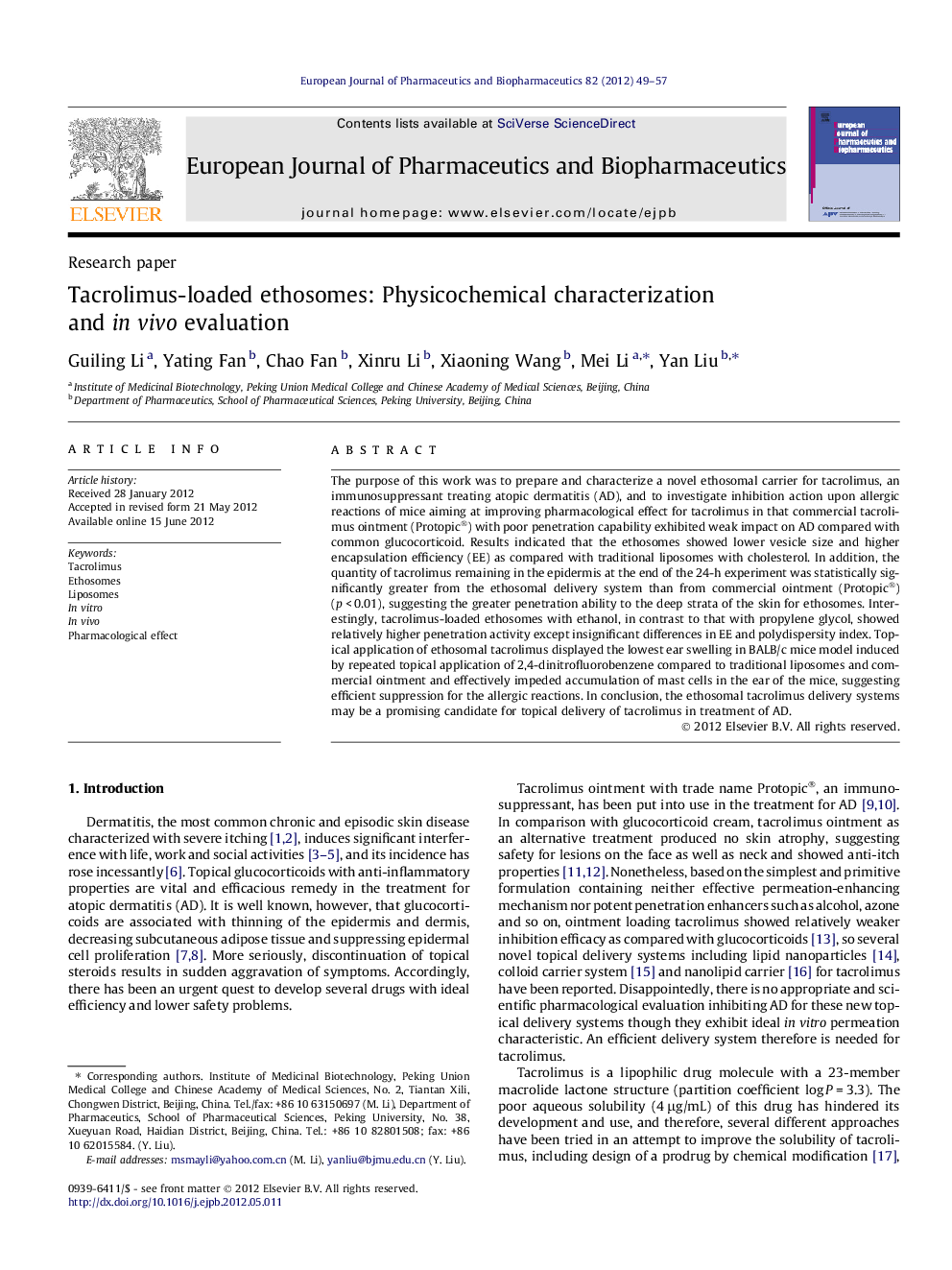| Article ID | Journal | Published Year | Pages | File Type |
|---|---|---|---|---|
| 2085293 | European Journal of Pharmaceutics and Biopharmaceutics | 2012 | 9 Pages |
The purpose of this work was to prepare and characterize a novel ethosomal carrier for tacrolimus, an immunosuppressant treating atopic dermatitis (AD), and to investigate inhibition action upon allergic reactions of mice aiming at improving pharmacological effect for tacrolimus in that commercial tacrolimus ointment (Protopic®) with poor penetration capability exhibited weak impact on AD compared with common glucocorticoid. Results indicated that the ethosomes showed lower vesicle size and higher encapsulation efficiency (EE) as compared with traditional liposomes with cholesterol. In addition, the quantity of tacrolimus remaining in the epidermis at the end of the 24-h experiment was statistically significantly greater from the ethosomal delivery system than from commercial ointment (Protopic®) (p < 0.01), suggesting the greater penetration ability to the deep strata of the skin for ethosomes. Interestingly, tacrolimus-loaded ethosomes with ethanol, in contrast to that with propylene glycol, showed relatively higher penetration activity except insignificant differences in EE and polydispersity index. Topical application of ethosomal tacrolimus displayed the lowest ear swelling in BALB/c mice model induced by repeated topical application of 2,4-dinitrofluorobenzene compared to traditional liposomes and commercial ointment and effectively impeded accumulation of mast cells in the ear of the mice, suggesting efficient suppression for the allergic reactions. In conclusion, the ethosomal tacrolimus delivery systems may be a promising candidate for topical delivery of tacrolimus in treatment of AD.
Graphical abstractEffects of tacrolimus-loaded ethosomal delivery system on ear swelling caused by the final challenge with DNFB. A: Histopathological images of skin lesions stained by hematoxylin and eosin. Skin lesions were excised 24 h after the final challenge. B: Ear swelling. Ear thickness was measured 2, 6 and 24 h after the final challenge. Mean ± SD for eight mice. **p < 0.01, *p < 0.05, ns p > 0.05; NC 1: acetone/olive oil (3:1), NC 2: blank ethosomes, PC1: dexamethasone creams, PC2: Protopic®, E I: tacrolimus-loaded ethosomes with ethanol 30% v/v, E IV: tacrolimus-loaded ethosomes with propylene glycol 30% v/v, TL: tacrolimus-loaded traditional liposomes.Figure optionsDownload full-size imageDownload high-quality image (132 K)Download as PowerPoint slide
